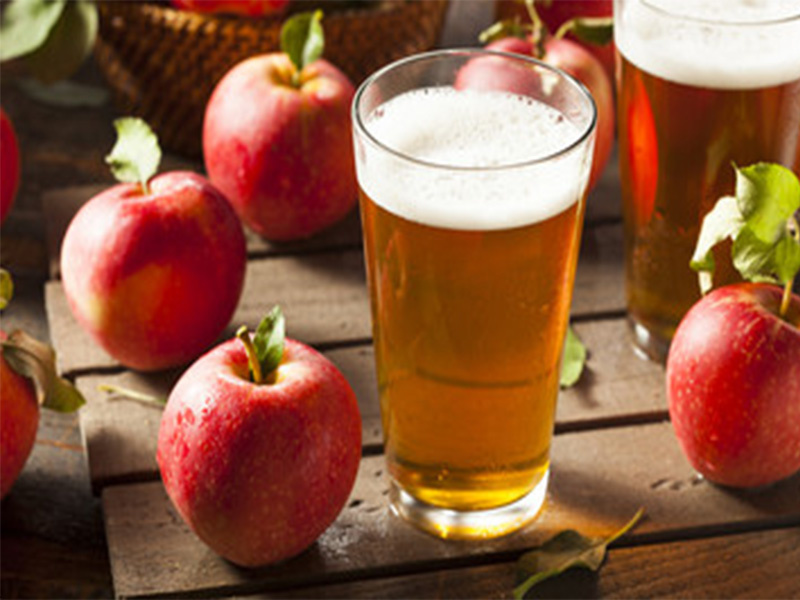“Hard” Cider is Not “Hard” to Enjoy
- Posted on
- Posted in Hard Cider, Virginia
- 0

“Hard cider” is the term given to the alcoholic beverage that is made from fermented apples in order to distinguish it from the non-alcoholic version that is known simply as “cider.” Hard cider is made in virtually the same way that wine is made, via the conversion of simple sugars in the fruit into ethanol, by adding yeasts.
Hard ciders usually have alcohol levels ranging from 1.2 to 8.5 percent. They can taste dry to sweet, be visually clear to cloudy with sediment, and be nearly colorless to amber brown, depending on the style and cider master.
Culinary apples can be used to make hard cider, with varieties like McIntosh, Golden Delicious, Jonagold, Granny Smith, Gala and Fuji. Many more artisanal ciders are using heritage apples including Dabinett, Kingston Black, Roxbury Russet, and Wickson. Often the name of the apple may appear on the label.
Hard cider was brought to America in the 17th century by British settlers as a safer-to-drink option to water. Colonists brought apple seeds to the New World, and were planting them in the fertile soils of New England as early as 1623.
As of January 2018, there were 820 cider makers in the United States. By law in the United States, at least 50 percent of the ingredients that go into making a hard cider must be apples. This allows cider masters the freedom to make standard ciders solely from apples, or to add other fruits or other ingredients to make specialty hard ciders.
Aside from standard cider, ciders can be fruited, hopped, spiced, wood-aged, sour, ice, sparkling and rosé in style. Fruited hard cider can be made with the addition of crushed or fruit purees from peaches, cherry, raspberries, pears, and many more. Hopped ciders are made with the addition of hops to the fermentation. Spiced ciders are usually made with the addition of spices like cinnamon or ginger. Wood-aged ciders are either fermented or aged in barrels yielding earthy and woody notes.
Sour ciders are those produced using different yeasts that enhance the production of acetic and lactic acid, causing them to have the desired sour taste. Apples can be frozen prior to pressing, in order to concentrate the sugar, and the cider produced from this concentrate will be much like an ice wine—viscous, thick and sweet.
Sparkling hard cider can be made by the addition of carbonation after the cider has been made or via other sparkling wine techniques, such as the tank method, or the traditional Champagne method (a second fermentation occurring in bottle with the addition of fruit juice and yeast to a still cider).
Rosé cider can be made from the addition of grape skins from wine-making, or by using pink-fleshed apples like Pink Pearl and Amour Rouge, though some cider makers may use food grade dyes, red fruit, rose petals, or hibiscus to yield the color.
For this First Friday, September 6, 2019, City Vino will be featuring Castle Hill Cider Serendipity. This cider is made in Virginia, from Pippin and Gold Rush apples, and has nice citrus and floral notes with a soft, slightly sweet finish.

We have tastings at City Vino every First Friday.